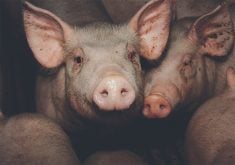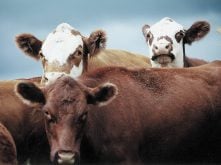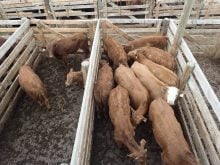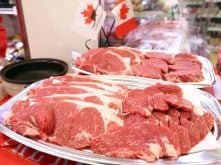Spaying heifers would be more common if it was easier on veterinarians’ arms, less costly for producers and the death loss could be all but eliminated.
Producers started leaving bulls out longer after BSE and more unwanted pregnancies began showing up in feedlots. This created calving related problems.
Spaying eliminates these problems.
Producers have long recognized the need to prevent certain females from cycling and getting pregnant.
A century ago, they did it with an incision through the midline just ahead of the udder. Heifers were either pulled up with ropes or strung out like team ropers now do at rodeos.
Read Also
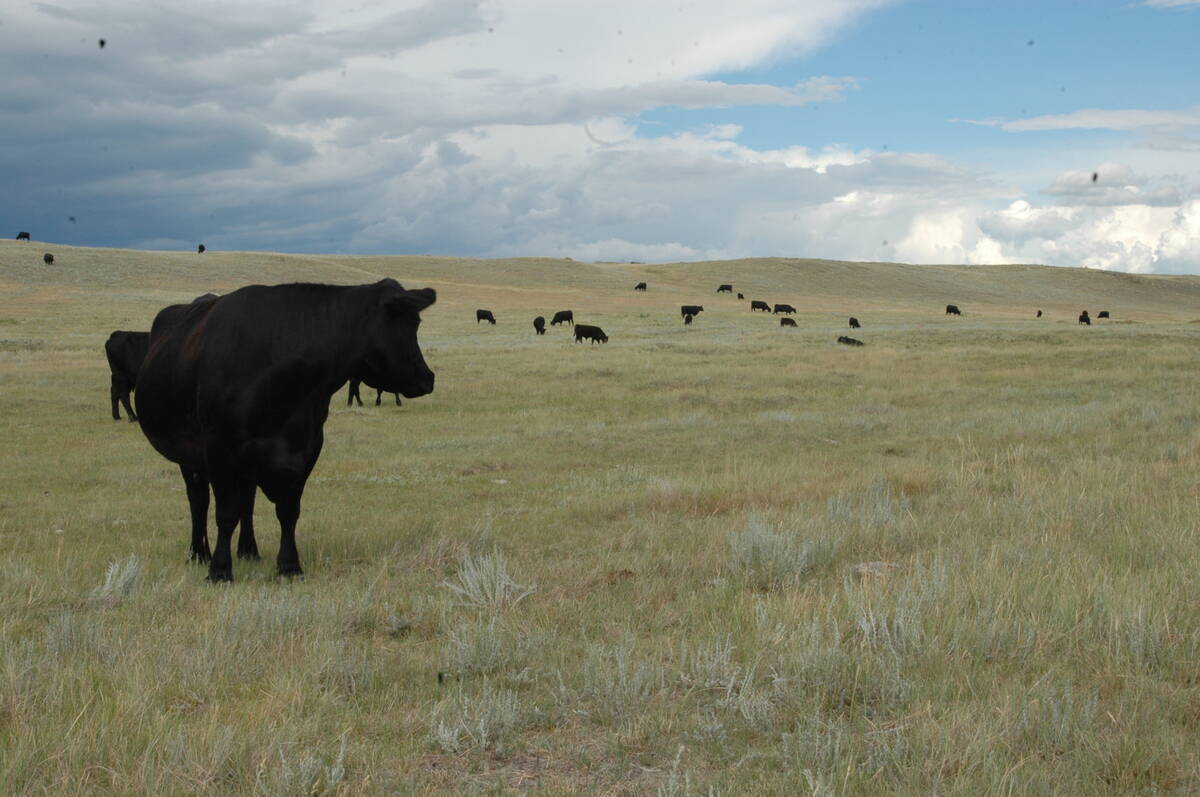
Saskatchewan Cattle Association struggles with lower marketings
This year’s change in the provincial checkoff has allowed the Saskatchewan Cattle Association to breathe a little easier when it comes to finances.
These pioneers spawned the modern spaying techniques in the veterinary profession.
Spaying next evolved into a small flank incision. Long scissors were inserted through this incision to cut off ovaries, which were then removed. To be efficient and humane, animals were prepped in one chute and surgery performed in the next.
The advantages were that ovaries were totally removed and nothing was done blindly.
The procedure was slow – 20 per hour was considered fast – and scarring was left in the flank, which created trimming losses at slaughter. Usually one or two large sutures closed the incision.
Today, we use devices through the vagina, and the ovaries are cut off blindly. Heifers need to be starved for at least 24 hours and the procedure needs only one chute.
The procedure can be done in about half the time of the flank incision method.
Two instruments are used: the Kimberly-Rupp and the Willis.
The first is a tube-like instrument that is popped into the abdomen through the vagina. A chamber is opened, the ovary is popped into it, cut off and removed.
This is repeated on the other side and the chamber is checked to make sure both ovaries have been removed and no gut is present.
Finding part of the intestine in the chamber means the gut has been perforated, and that is not a good thing.
Preventing the animal from feeding shrinks the rumen and intestines, which pulls them out of the pelvis area and minimizes the chances of gut perforation.
We always use antibiotics in case an infection is introduced.
The Willis is a simple instrument, light and well machined with a slot opening in the end.
The object is to pop it through the vagina just above the cervix. With the instrument free in the abdomen, one hand manipulates the instrument and the other gloved arm in the rectum guides each ovary through the drop slot. The Willis is pulled back, the ovary is held and cut off. The ovary subsequently drops off into the abdomen.
Infection is reduced because the instrument is introduced into the abdomen only once. The drawback is this is all blind and the bowel can be lacerated.
The major advantage to spaying is increased gains if the heifer is also given a steer implant at the same time.
Eliminating cycling by spaying the whole group, whether at pasture or in the feedlot, can also increase gains.
Only the replacement heifers will be bred if breeding heifers and feeder heifers are run together.
The gains also carry over to the feedlot if undesirable pregnancies are eliminated.
Spayed heifers could also be run with steers at pasture. Studies done in the early 1990s found advantages of up to $75 per implanted spayed heifer over controls.
Spaying has become a lost art because few veterinarians do them and those who do perform too few to become proficient.
Inexperience may increase the death loss to two percent, creating a huge difference in profit. Most deaths are from perforated bowels, but occasionally one will bleed to death.
I once spayed pregnant heifers that were less than six months pregnant, and they all aborted uneventfully. There was one death from blood loss in an open heifer.
With greater proficiency came greater speed, but even then, with small heifers, there were limits to how many could be done in a day.
The procedure was hard on shoulders and wrists because a lot of dexterity was needed to perform this procedure.
A few heifers could become poorer because of chronic infection, although this was rare because the procedure was covered with antibiotics.
Australia also spays feeder cows successfully, and a classmate of mine developed a longer instrument for cows but found death loss was higher.
The biggest task for producers who are interested in spaying heifers might be finding a veterinarian to do the job. All the veterinarians in Alberta who used to do it have retired.
If the need is there, perhaps the new generation of veterinarians will take up the task.



